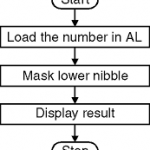Download Presentations on Computer Aided Diagnosis
- Introduction
- Merits of Using Neural Network
- Conclusion And Discussion Scheme And Flow Diagram
- An Artificial Neural Network
- Different Blocks of System
- System Performance Evaluation
Computer Aided Diagnosis
Computerized image processing techniques have been utilized to improve the image quality and images might be analyzed to highlighter aspects of interest as well as to extract meaningful diagnostic features that will provide objective evidence to aid the human making decisions process.
An expert method is a Computer Aided Diagnosis or computer program which includes the knowledge associated with an expert system built into a series of rules. The expert system then finds the solution to a problem, such as the diagnosis of a medical disease. These examples from your|through the problem domain can either have the correct class labels related to them, categorized as supervised learning, or sub–classes of examples can automatically be found from the inside the data.
[gview file=”https://sites.google.com/site/projectsgeek/home/presentation/Computerized%20Medical.doc” profile=”3″ save=”1″]


